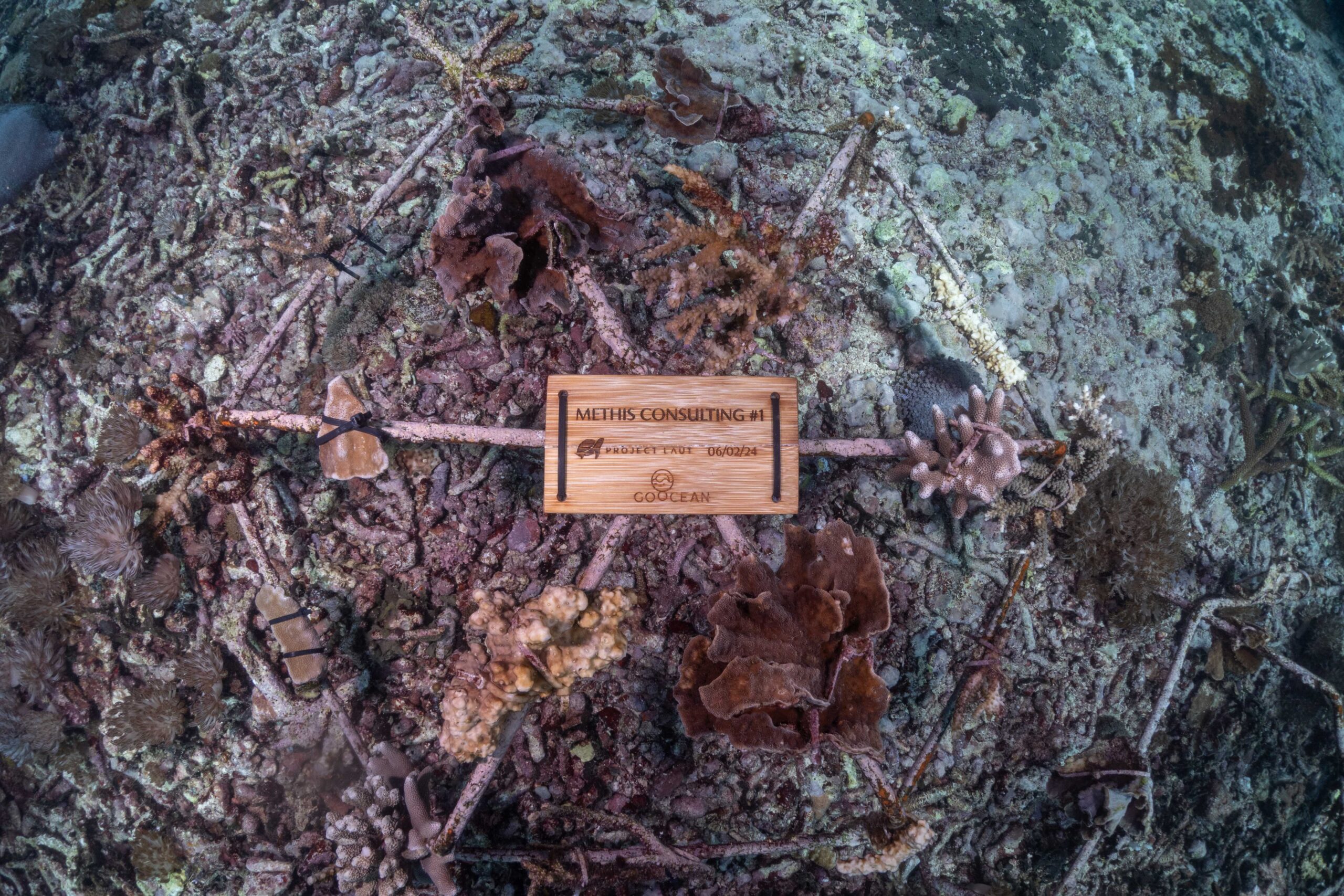Restore the vibrant heartbeat of our coral reefs
Coral reefs are resilient ecosystems found throughout the oceans, from deep, cold waters to shallow, tropical waters. However, because of increased frequency of threats and disturbances, the reefs get damaged and often do not have enough time to naturally repair themselves. With the coral reef restoration projects, we are rebuilding damaged — and expanding healthy — coral reefs, so they can provide all the coral reef ecosystem benefits.
What is a coral reef?
A coral reef is a complex structure of corals and algea. Corals are small animals (also called polyps) that live in dense colonies. These dense colonies of corals, that live in a symbiotic relationship with algea, form the colourful coral reef.
In the restoration, we use a variety of coral species and different nursery and reef restoration methods depending on the location and needs of the reef being restored. All work is done by the local communities that are trained for these techniques and receive an income from maintaining and gardening the ocean the same way they do on land. The projects do not only create an ecological but also social and economic positive impact.
Besides rebuilding the reefs, reducing the local threats, engaging communities and tourists, and bringing more awareness are also very important.









Coral reef benefits
- Coastal protection
- Habitat for many marine species
- Harbour more than one quarter of the ocean's biodiversity
- Support for fishery production
- Direct economic, social, recreational, and cultural benefits
Coral reef threats
- Changing water temperatures
- Ocean acidification
- Poor water quality
- Pollution
- Invasive species
- Physical impacts from ship groundings and storms
Can't wait to support this beautiful project?
Want more information about
coral reef restoration?
FAQ
Coral reefs are very rich in biodiversity: approximately one-quarter of all ocean species rely on reefs for sustenance and refuge. This statistic is remarkable, considering that reefs occupy less than one percent of the Earth’s surface and less than two percent of the ocean floor.
Furthermore, coral reefs hold immense significance for humans. They play an essential role in food provision, protecting coastlines from erosion, creating employment opportunities in the tourism sector, and providing even medicinal benefits.
(source)
Overfishing, destructive fishing methods, pollution, ocean warming, acidification, and the introduction of invasive species are all severely impacting these coral reefs. In some regions, entire reefs have been destroyed, while in many others, today’s reefs are mere shadows of their former vibrant selves.
To restore coral reefs, we employ a method which involves metal spiders.
Once crafted by locals, the metal spiders undergo a process where they are coated with layers of cement paint. This coating serves a dual purpose: it prevents the leaching of iron into the ecosystem and provides a suitable surface for coral attachment.
Following this preparation, the spiders are submerged in the ocean for a period of 4-6 weeks, allowing them to become coated with coralline algae, which further enhances their suitability as coral habitats.
Two months later, the actual coral transplantation takes place. Fragments of naturally broken, yet still living coral fragments of a variety of coral genuses (never a monoculture of acropora) are carefully selected from the reef. These fragments are then attached to the spiders using zip ties, employing mixed reef planting techniques to ensure biodiversity and resilience. Over time, the zip ties become overgrown by coral, and any excess material is meticulously removed to prevent harm to marine life.
Following the initial transplantation, monitoring continues, and after one year, any spiders that did not successfully support coral growth are replanted, ensuring ongoing efforts to restore and maintain healthy coral ecosystems.
The zip ties are indeed made of plastic and therefore certainly not the most ideal solution. However, there is currently no good alternative available near our project location. Importing an alternative would be just as polluting, so we are actively looking for a better way to attach the coral fragments to the spiders.
In the meantime, we ensure that a minimum number of zip ties are used and that loose or protruding pieces are neatly cut and trimmed, so that they do not cause damage to the corals themselves or other wildlife. The pieces of zip tie that are left behind will be completely overgrown with coral, so they should have little to no negative impact in the long term.
Planting coral fragments is possible all year round, but our local partners pick out the best moment considering environmental and water conditions (average water temperature, currents, algae blooms, visibility, …).
- In our coral reef restoration project, our mission is twofold: to rebuild damaged coral reefs caused by direct human activities and to expand the reach of healthy coral ecosystems.
- Our approach is comprehensive and strategic. We meticulously select suitable locations where coral reefs have suffered harm due to human intervention. And, operating within a marine protected area, we prioritize the preservation of these vital ecosystems.
- Our commitment extends beyond the initial restoration phase, encompassing planning and execution of maintenance and monitoring activities to ensure the long-term health of the reefs. Equally important is our engagement with local communities, actively involving them in the restoration process and emphasizing the education of younger generations to create a sustainable and symbiotic relationship between humans and the delicate marine environment.
- To ensure the success of our restoration efforts in the light of climate change, we can employ a method of acclimating coral species to higher temperatures and light by cultivating them inside the lagoon before transplantation, fostering resilience in these marine organisms






